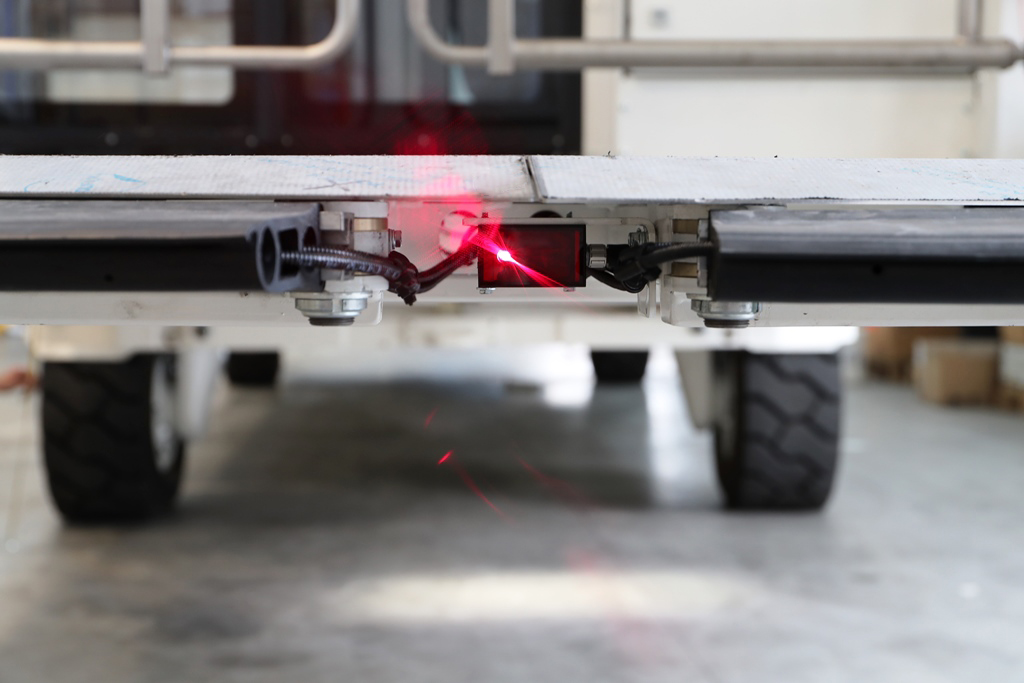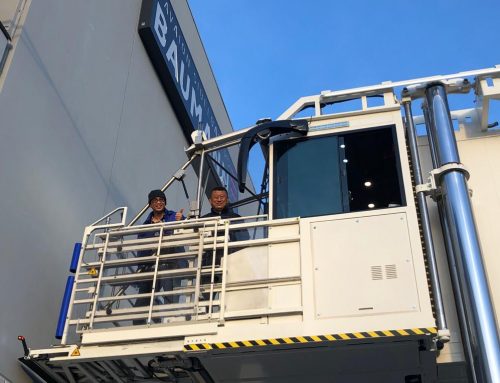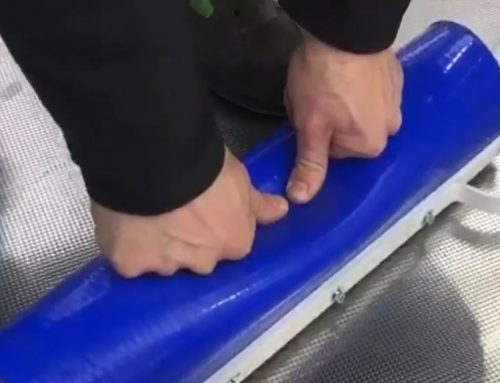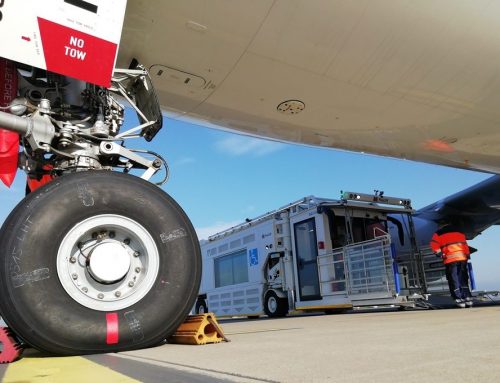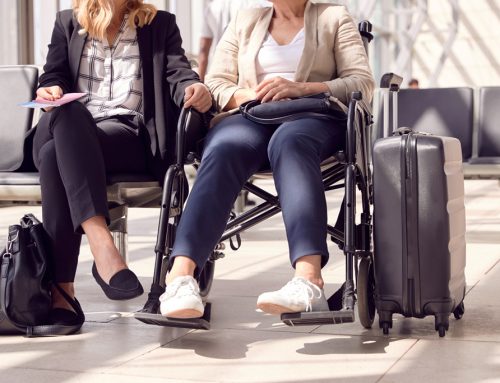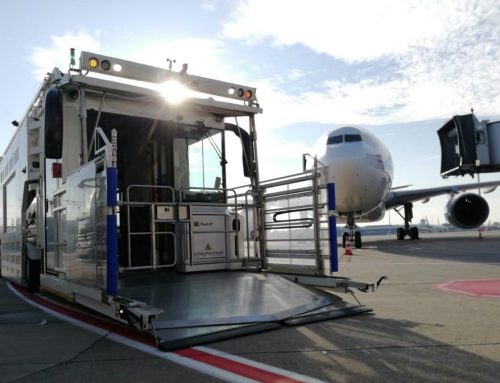We’ve added laser guided distance monitoring to our latest PaxLifts. The guides facilitate two important functions, highlighting when the vehicle is entering a low speed zone and bringing the extending access ramp to a stop before it touches the aircraft.
The additions means that PaxLift complies with sections of the AHM 913 regulations that specifies that equipment must indicate when to engage the snail speed and to stop the unit at contact.
Senior PaxLift technician, Lorenzo Laezza, explained that the technology is proven but adherence to the regulations is not without challenges. Said Lorenzo: “At ground level the task is fairly straightforward, but at different heights the issue becomes more complex. PaxLift can lift beyond 8 metres and so we have multiple sensors to ensure that the process is clear and accurate.”
The new system comprises six sensors which control the approach to the aircraft, and stops the PaxLift once it reaches a safe position. An automatic swivelling system with +/-14 degrees of movement has been integrated into the platform, and no longer needs to touch the aircraft to operate.
Crucially, the system is designed to allow the opening of all the aircraft doors, without opening the front safety gate, so assuring maximum safety for all PaxLift operators.
Klaus Pirpamer, managing director of PaxLift, comments: “There have been ambulifts on the market, and there remain today, versions that require the front gate to open when the side bumpers are still not yet in position, so a risk of falling remains. PaxLift eliminates that risk.”
“With the new upgrade to a no-touch system, we are also achieving a safe and controlled position in relation to the aircraft. Passengers with reduced mobility can be safely transported to their seats without our vehicle coming into unnecessary contact with the aircraft.”
The principle behind the PaxLift solution was to avoid the inherent problems associated with adapted PRM vehicles, such as stabilizers, juddering and sudden movements, slow loading times, double and triple lifting with auxiliary platforms and uncomfortable, often manually intensive, experiences for passengers. Lateral movement in particular is likely to cause motion sickness or feelings of vertigo, perhaps even mild anxiety or panic as our sense of balance is upset.
“To disembark at ground level there’s no secondary platform needed,” add Klaus. “There are no unpleasant sideways movements either.”
Since first being introduced in 2016, PaxLift has been refined and updated as awareness of passenger requirements has increased. It’s now in operation in airports in the UK, Germany, Italy and Hong Kong.
“We believe that passengers appreciate the comfort and smooth lifting, and efficiency of the process,” adds Lorenzo, “and with the air travel sector experiencing many challenges in the wake of Covid, being able to process PRM requests quickly and with a single operator will prove incredibly important.”
Many airlines already forbid contact with the aircraft by ground support equipment to minimise damage and risk to passengers. Klaus concludes: “We are pleased we are able to offer a solution that fully aligns to industry-approved policies and standards for GSE. Our team is committed to continuing to improve the PaxLift in line with the requirements of airports and airlines.”

